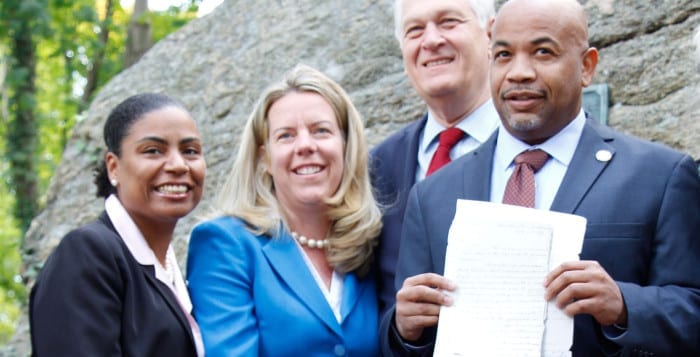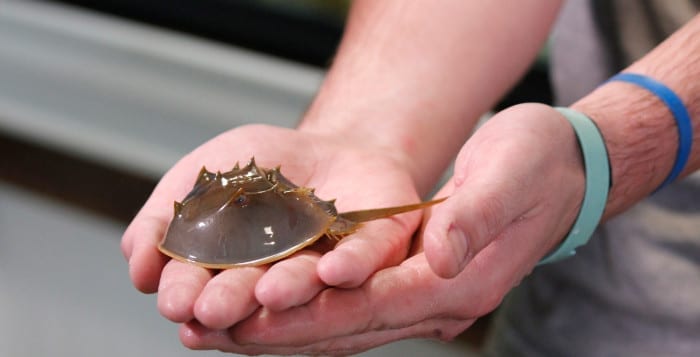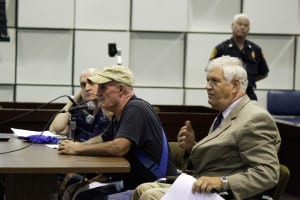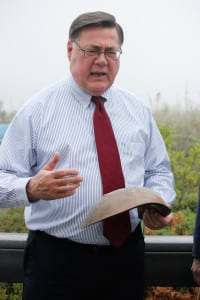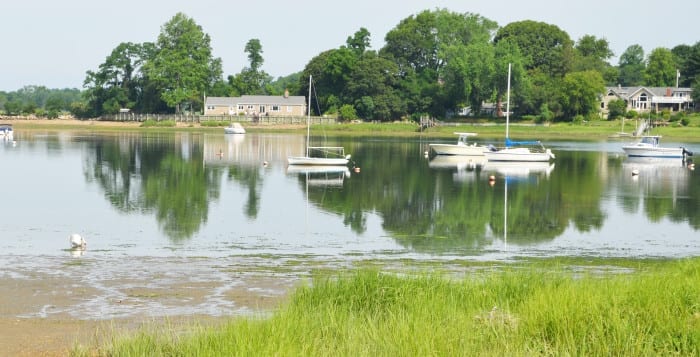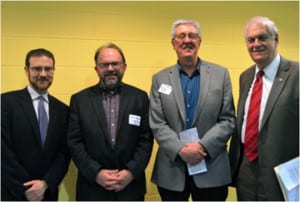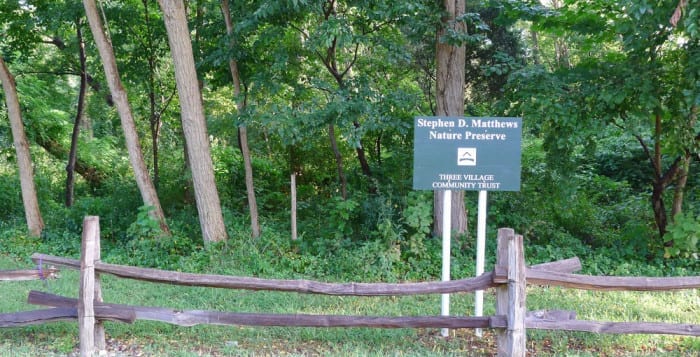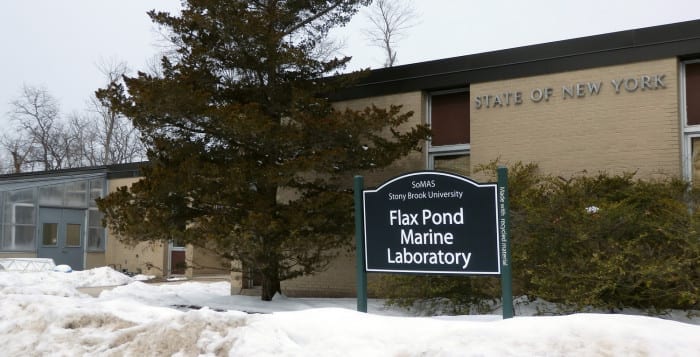He is not only the first African-American Speaker of the New York State Assembly, but also the first speaker to visit various districts on Long Island, as far as one long-standing North Shore lawmaker can remember.
Assembly Speaker Carl Heastie (D-Bronx) visited Setauket on Oct. 20, and met with residents and North Shore government officials, including Suffolk County Legislator Kara Hahn (D-Setauket); Brookhaven Councilwoman Valerie Cartright (D-Port Jefferson Station); and state Assemblyman Steve Englebright (D-Setauket).
“This happens about once every … well, it never has happened,” Englebright joked. “It’s pretty amazing.”
While touring the area was on Heastie’s agenda, his visit was also about getting better acquainted with the needs and concerns of residents in areas like Setauket, he said.
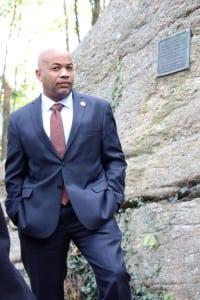
“When members get up and speak in conference, when they talk about what’s important to them or where they want us to concentrate or try to do things in the budget … [visiting the districts gives] me a better idea of what they’re speaking about,” Heastie said in an interview.
Heastie was elected Speaker of the NYS Assembly on Feb. 3. Since his election, Heastie has tackled a variety of issues including education, homelessness, financial stability for families and minimum wage, among other areas of concern.
The speaker also has ties to the greater North Shore community, as he graduated from Stony Brook University in 1990 with a degree in science. State Sen. John Flanagan (R-East Northport) was recently named the Senate majority leader, making the North Shore’s presence strong in the state Legislature.
Although Heastie had limited time to mingle, Englebright guided Heastie around various areas in Setauket, touring the community’s coveted Greenway Trail, and introducing him to the history of the region and the role it played in the birth of the United States, starting with Patriot’s Rock in Setauket, where the famous Battle of Setauket was fought.
Officials from Stony Brook University library were on hand to deliver the speaker a copy of a famous letter George Washington signed at West Point during the Revolutionary War.
“I used to teach political science and American history,” Heastie said. “So I’m kind of a history buff. It’s just something that was a little different than other parts of the tour, so this was nice — particularly with it being so close to the college that I graduated from.”
After learning about Long Island’s link to the Culper Spy Ring, dating back to the Revolutionary War era, the speaker stopped at the Bethel African Methodist Episcopal Church, followed by a visit to Gallery North in Setauket.
Throughout the visit, Englebright and other North Shore leaders used their time with the speaker to reiterate some of the region’s most pressing issues, including preservation and environmental sustainability. Englebright also reaffirmed Heastie’s desire to tour the districts as a means of helping those he represents and serves as speaker.
“He’s very interested in visiting the various districts and learning of what his members are working on,” Englebright said. “I’m one of his senior members, and I’m very grateful he wants to come out and see what are the things I’m really focused on in the district.”

